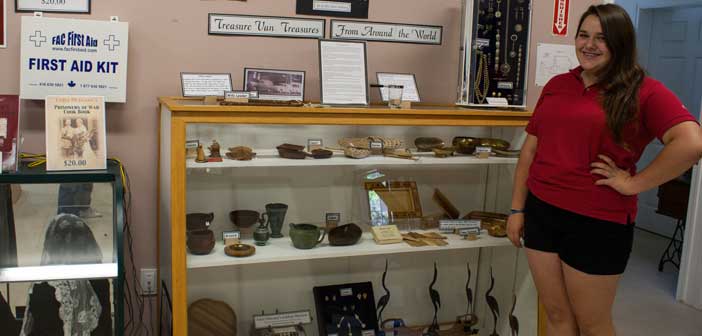CHARLEBOIS—Diver Steve Libert of the Great Lakes Exploration Group out of Charlebois, Michigan will be ruffling more Island feathers with his latest claim to have discovered the Holy Grail of North American wrecks, Sieur de La Salle’s Le Griffon.
The vessel, built in the 1600s on the shores of the Great Lakes, holds the unfortunate record as the oldest decked ship to be lost on the Great Lakes. Long thought to have been lost in Lake Huron, based on an historical record identifying the ship as sinking near the islands of the Hurons, Mr. Libert is “99.9 percent certain” that he has located the fabled wreck.
About a month ago, a 12–person expedition “located the resting place of Le Griffon, 118 feet southwest of last June’s recovered bow sprit,” said Mr. Libert, who has spent more than 20 years chasing the shadows of Le Griffon through stacks of historical parchments and across the murky waters and muddy bottoms of the Great Lakes.
Mr. Libert and his team were ecstatic when they discovered what they believed was the bowsprit of the vessel sticking up from the mud. A sonar outline in the mud below the sprit appeared to be that of a vessel.
[pullquote]“We dug down to bedrock and didn’t find anything,” he said. “Our permits ran out last summer before we could go back.”[/pullquote]
Sadly for the expedition, the wooden structure did not prove conclusively to critics that it was indeed part of Le Griffon, despite boasting features that mirrored those of contemporary ship construction. Some critics dismissed the find as a fishing net anchor. But Mr. Libert insists that he has the support of French researchers. Carbon dating and scans of the wood failed to establish conclusively that the structure was a 17th century vessel.
Excavating beneath the structure brought further disappointment. The water around the site is much clearer than it was when Mr. Libert first began diving the area thanks to the work of invasive zebra mussels. “The zebra mussels have since died back after a very large bloom,” he said. “But in dying off, they left behind millions of shells littering the lake bottom.” It was sonar reflections from those shells that had formed the impression of a vessel hidden in the mud.
“We dug down to bedrock and didn’t find anything,” he said. “Our permits ran out last summer before we could go back.”
Undaunted, the team has continued to search the area and they have now found a debris field just 118 feet from the site of the wooden spire. Dives have indicated that the debris is consistant with what would be expected if Le Griffon lies on the lake bottom there.
Mr. Libert has spent countless hours combing through archives on two continents seeking references to the vessel, pouring over documents that often required translations that themselves required further research and analysis. Unfortunately for Manitoulin’s aspirations to laying claim to Le Griffon’s resting place, that research is building a fairly strong case.
The historical context of “the islands of the Hurons” is particularly interesting, as the term Huron, given to that First Nation by the French, actually translates as “rough” or even “wicked.” Thus, the reference may well not be about Lake Huron at all, said Mr. Libert. “I get a lot of calls from academics and university professors,” he laughs. There is a lot of academic territory to be defended and challenged in some of his findings.
The vessel is still the property of the French government; being both a wreck in the Great Lakes and a military vessel (La Salle was constructing a series of forts that would establish French suzerainty over the area).
Robert Cavelier, Sieur de La Salle, and by extension his vessel Le Griffon, hold a critical role in the development and expansion of the United States, Spain, France and Great Britain, as well as the early history of Canada—so a lot of countries have an interest in the ship.
The French explorer’s chain of forts established what became the Louisiana territory, a large part of which later became known as the Louisiana Purchase. That $14 million purchase of almost a quarter of a continent by a young United States opened up the westward expansion of that nation to the Pacific coast and greatly expanded its territorial boundaries in one fell swoop.
Since it is too late in the year now to gain new excavation permits for the site, the definitive establishment of whether the site is that of Le Griffon will likely have to wait until the underwater dig next year.
Meanwhile, history buffs and wreck aficionados will continue to debate the merits of the research behind the site and whether Le Griffon really lies in the waters of Lake Michigan.




